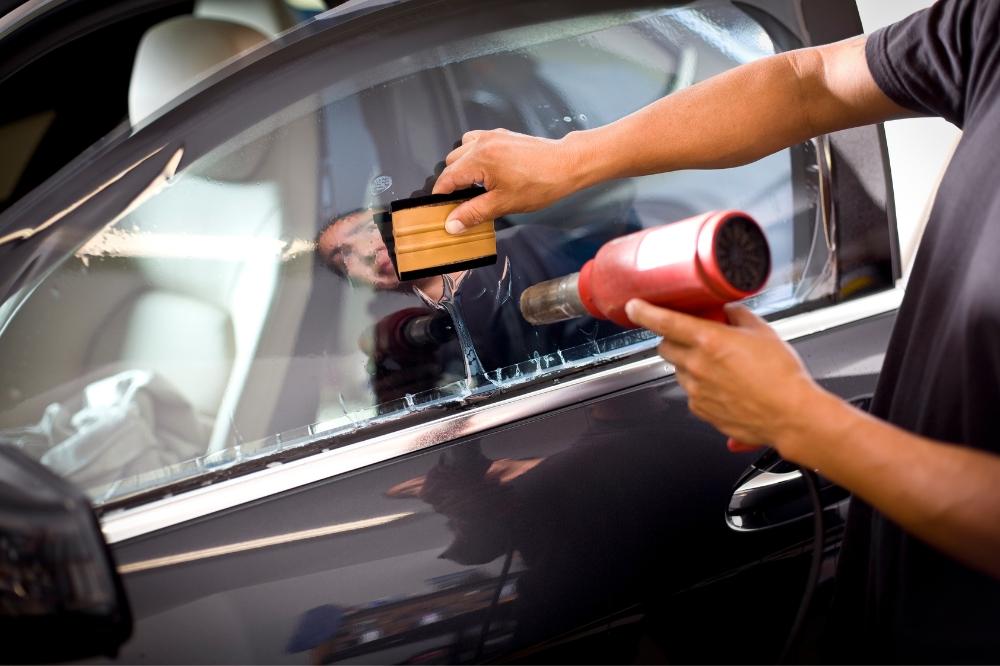Tinted windows are a popular addition to cars, offering benefits like reduced heat, improved privacy, UV protection, and a sleek look. However, to keep your car's tinted windows in top condition, regular and proper maintenance is essential. Without it, window tints can peel, bubble, fade, or scratch, reducing their appearance and effectiveness.
This guide will walk you through everything you need to know about maintaining your car’s tinted windows for long-lasting performance.
1. Allow Proper Time for Tint Curing
Immediately after installation, your tint film needs time to cure and adhere fully to the window. The curing process can take a few days up to a few weeks, depending on the type of film and weather conditions.
What to Do During Curing:
-
Avoid rolling down your windows: This prevents the edges of the film from lifting.
-
Don’t clean the inside of the windows: Moisture or bubbles are normal during this time.
-
Keep your car out of heavy rain or moisture: It helps the tint dry evenly and prevents interference with the adhesive.
Always ask your installer for specific curing guidelines, especially if you live in a humid or cold climate.
2. Use Tint-Safe Cleaning Products
Cleaning tinted windows the wrong way can lead to damage. Ammonia-based cleaners, harsh cloths, or abrasive scrubbing tools can cause the film to deteriorate or scratch.
Best Cleaning Practices:
-
Wait at least a week after installation before your first clean.
-
Use a soft microfiber cloth or sponge to gently wipe the windows.
-
Choose ammonia-free glass cleaners labeled safe for tint. You can also make your own cleaner using water and a small amount of baby shampoo or dish soap.
-
Spray cleaner onto the cloth, not directly on the window. This prevents moisture from seeping under the film edges.
Avoid using paper towels, rough cloths, or squeegees with metal or hard plastic edges, as these can scratch the tint.
3. Avoid Adhesives and Stickers on the Tint
Applying decals or suction cups to the inside of tinted windows can weaken the adhesive or cause permanent marks.
Best Practices:
-
Place stickers or parking permits on untinted areas, such as the windshield or exterior.
-
Never use sharp tools to remove stickers from tinted surfaces.
-
If you must remove residue, use a soft cloth with mild soap and water.
Keeping your tints free of stickers will preserve their clean look and prevent unnecessary damage.
4. Protect Tints from Excessive Heat and UV Exposure
While tints help block out the sun, extreme or prolonged sun exposure can still degrade the film over time.
Tips for Protection:
-
Park in shaded or covered areas whenever possible.
-
Use windshield sunshades to reduce interior temperature.
-
Consider ceramic or higher-end tints that offer superior UV and heat rejection for longer durability.
Reducing your tint's exposure to sunlight when the car is parked can dramatically extend its lifespan.
5. Handle Rear Defrosters with Care
The rear windshield of most cars contains embedded defroster lines. If not handled carefully, cleaning across these lines can damage both the tint and defroster function.
Maintenance Tips:
-
Wipe gently in the direction of the defroster lines.
-
Use soft cloths and avoid pressure on the lines.
-
Let the defroster heat up gradually; avoid sudden blasts of heat in cold weather.
Damage to these areas is costly to fix and can reduce visibility and function, so clean and operate with caution.
6. Inspect Tinted Windows Regularly
Regular checks help catch minor problems before they worsen.
What to Look For:
-
Peeling at the edges: A sign of adhesive breakdown or moisture damage.
-
Bubbling: Can indicate poor installation, trapped moisture, or degradation over time.
-
Discoloration (especially turning purple): Suggests poor-quality dye-based films that are breaking down under UV exposure.
-
Scratches or scuffs: May result from improper cleaning or contact with hard objects.
If any of these issues appear, consult a professional. Minor problems might be repairable, but extensive damage often requires re-tinting.
7. Don’t Use Window Tint as a Shelf
Avoid resting hard or heavy objects like boxes, bags, or tools against the inside of the tinted windows. These can easily press against the film and cause indentations, scratches, or bubbling.
For example:
-
When cleaning or vacuuming the back seat, don’t lean equipment against the rear window.
-
Avoid storing sharp or pointed items on the rear shelf of the vehicle.
Being mindful of how you interact with the tinted glass will help prevent accidental damage.
8. Know the Lifespan of Your Tint
Even high-quality window tint won't last forever. Depending on the film type and how well you care for it, automotive tint can last 5 to 10 years.
Lifespan by Type:
-
Dyed films: Least expensive, but prone to fading in 3–5 years.
-
Metallic films: Better heat rejection, longer lasting but can interfere with electronics.
-
Carbon films: Excellent heat reduction and durability.
-
Ceramic films: Top-tier performance and longevity, often lasting 10+ years.
When it’s time to replace, opt for professional installation and consider investing in higher-quality film.
9. Hire Professionals for Repairs or Re-Tinting
If your tint is damaged, bubbling, or discolored, it’s best to consult a professional. DIY removal or reapplication can leave adhesive residue, damage defroster lines, or result in uneven application.
Professionals:
-
Use heat guns and specialized tools to remove old tint cleanly.
-
Ensure precise and bubble-free installation.
-
Offer warranties and proper film matching.
While it may cost more, professional service ensures your investment looks and performs its best.
10. Stay Legal
Make sure your tint complies with your state or country’s regulations. These laws often specify how dark or reflective your tint can be, especially on the front side windows and windshield.
Overly dark or illegal tint may result in:
-
Fines
-
Forced removal
-
Vehicle inspection failures
A reputable installer will guide you on what’s legal for your area, so you avoid future headaches.
Final Thoughts
Maintaining your car's tinted windows isn't difficult, but it does require consistent care. By following proper cleaning techniques, avoiding harsh products, and protecting the tint from excessive heat and abuse, you can significantly extend its lifespan and keep it looking sharp.
Remember:
-
Be gentle.
-
Use the right tools and products.
-
Monitor for signs of wear.
-
Protect against sunlight and physical stress.
With proper maintenance, your tinted windows will provide years of comfort, protection, and style—making your car both look and feel better on every drive.







